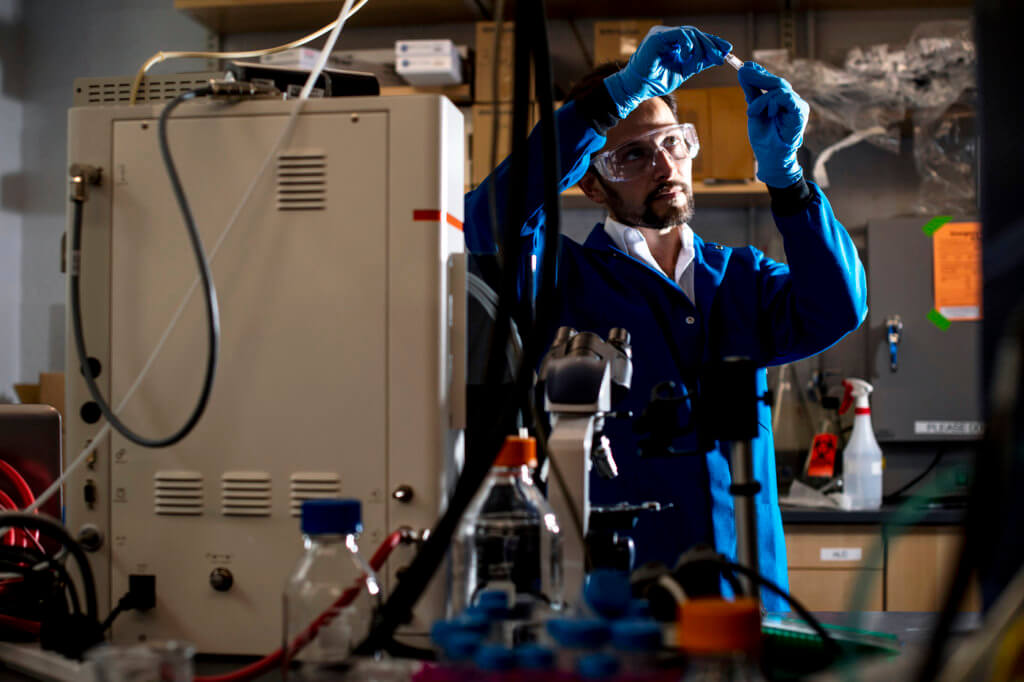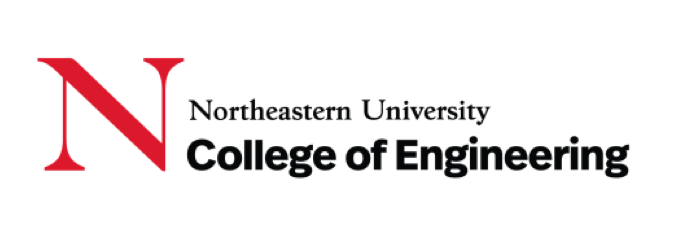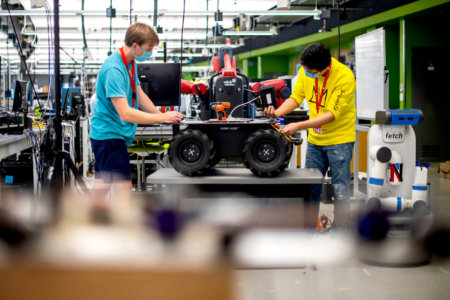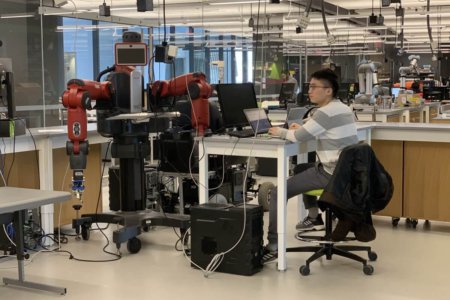Human beings are some of the most complex systems in the world, and responses to illness, disease, and impairments manifest in countless different ways. Healthcare professionals, with their deep well of knowledge, combined with the power of artificial intelligence — including millions of data points, global expert opinions, and objective conclusions from machine learning — offer unprecedented support to address healthcare challenges.
At Northeastern University College of Engineering, a top-ranked, R1 research institution, engineering researchers in fields such as Electrical and Computer Engineering, Mechanical and Industrial Engineering, and Bioengineering, are using artificial intelligence and machine learning in a variety of ways to work toward a future that is brighter for human health and more.

Source: Adobe Stock
Infant health
In a research effort funded by the National Institutes of Health, Professor Deniz Erdogmus, Associate Chair for Research in electrical and computer engineering (ECE), is partnering with ophthalmologists to better identify and treat retinal disease in premature infants. Retinopathy of prematurity (ROP) is a disease in which the retina is not fully or properly formed yet.
“If detected and assessed properly, ROP can be treated to prevent vision loss, but outside of urban areas the technology to do this isn’t widely available,” he explains.
With a network of healthcare providers in rural North America and in countries such as India and Nepal, Erdogmus is working with retinal images of preemies from specialized cameras, and using a neural network to identify and classify problem signs in the images to create a mobile platform that can be used anywhere to get a better, faster diagnosis of ROP.
In another project on early development, ECE Assistant Professor Sarah Ostadabbas is using artificial intelligence to examine the interplay between pacifier use and sudden infant death syndrome (SIDS).
“Disruption of motor development in infancy is a risk indicator for a host of disabilities and has a cascading effect on multiple domains: social, cognitive, memory, and verbal and non-verbal communication,” says Ostadabbas.
Automation of home-based screening tests can increase the percentage of children who are looked at for early delays and atypical development. Ostadabbas is using her expertise in computer vision and advanced artificial intelligence to create algorithms that can search for and identify sleep posies, facial expressions, and pacifier use behavior poses that can potentially signify developmental delays in infants.
Adult rehabilitation
On the other side of the spectrum, mechanical and industrial engineering Assistant Professor Chun-An (Joe) Chou is using machine learning techniques to help provide objective feedback to medical professionals on sensory or motor impairments in patients after they have suffered strokes to improve clinical assessment and rehabilitation.
“By using automation, we can provide personalized guidance for the medical provider in identifying real-time responses in clinical practice, and eventually in remote care,” says Chou. “From a delay in noticing a pedestrian crossing the street to not seeing a stop sign, the patient’s cognitive responses can be categorized using artificial intelligence to offer providers a window into their impairments and recovery.”
Patient monitoring is another application for artificial intelligence. ECE Professor Raymond Fu is using his experience in low-cost and portable sensors to work in digital healthcare by monitoring patient behavior during rehabilitation and exercise to increase effectiveness and decrease injury.
Using artificial intelligence to analyze data from sources like muscle sensors, 3D motion capture sensors, camera sensors, and more, Fu seeks to teach the artificial intelligence system to generate alerts about anomalies or suggest additional services to facilitate researchers, therapists, and doctors in their practice.
“By teaching artificial intelligence to perform recognition, classification, tracking, and analysis—all remotely, quickly, and highly efficiently—we can help health practitioners offer instantaneous feedback and support,” explains Fu.

Source: Ruby Wallau, Northeastern University
Predicting molecular mechanisms of disease
Bioengineering Associate Professor and Allen Distinguished Investigator Nikolai Slavov is using artificial intelligence and machine learning to predict molecular mechanisms of disease through protein analysis of thousands of single cells. He is examining the roles of human macrophages, a type of immune cells, in diseases such as cancers and autoimmune disorders.
Slavov and his team use automation to identify, label, and categorize their analysis of cellular proteins to enable supervised machine learning that can discern on its own what is significant. Slavov says, “With artificial intelligence, the hope is that we can better understand the physical interactions between molecules, which can be broadly applicable to any disease and early human development.”

Source: Matthew Modoono, Northeastern University
Preventative intelligence
Artificial intelligence is also addressing the growing concern of opioid abuse. Machine learning techniques are being used to analyze large-scale healthcare data and identify determinants that lead to opioid overdose. Working from large-scale healthcare claim data, mechanical and industrial engineering Assistant Professor Md Noor E Alam and his research team have identified several prominent features that may help indicate opioid overdose in future patients.
“Of the many people dying in the US because of opioid overdose, more than 27% have been from prescribed medication,” says Alam. “So, our first step is to make sure that physicians are appropriately identifying patients who have potential to misuse the drug.”
Take the next step
These are just some of the many ways that accomplished faculty in a variety of engineering disciplines at Northeastern University College of Engineering are innovating using the power of artificial intelligence and machine learning to make a transformative impact on society.
With Northeastern’s rigorous academics, top ranked co-op program, top-tier research activity and facilities, and government, industry, and interdisciplinary collaborations in Boston, Massachusetts, and a global network of campuses in innovation hubs, you too can make an impact.
View all of Northeastern University’s engineering Master of Science and Doctor of Philosophy degrees and apply to get started.
Follow Northeastern University College of Engineering on Facebook, Twitter, Instagram, LinkedIn or YouTube













